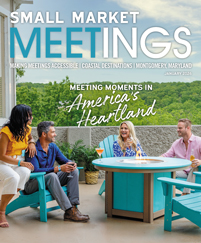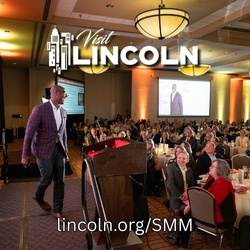In the digital age, an event’s website may be the first point of contact. So how do planners make sure prospective attendees like what they see?
Planners have many factors to consider when it comes to building an effective website for their conference, trade show or other event. They’ll need to determine a timeline, design and platform for starters. And what about influential concepts looming over all things tech, such as artificial intelligence and mobile-first design?
Here’s what three event tech leaders had to say about what matters in the world of event websites.
Planning It Out
Mapping out the logistics of an event website is the first step toward building it.
Consider what needs to be included. An event planning website should list the basic details of an event, including the date, the location, speakers and any important deadlines. Functional components, such as registration and appointment scheduling, are also integral.
However, an often-overlooked purpose of these websites is to sell the event in addition to providing its key details. Traveling to conferences can be expensive and takes time away from an attendee’s work and their family, so attendance depends on persuasive content.
“It’s more about convincing them,” said Liz King Caruso, CEO of Liz King Events, Ignite Consulting Program and Techsytalk. “It’s understanding the problem they have that will be solved if they go to your event.”
Jonathan Kazarian, founder and CEO of Accelevents, an event tech platform, said websites should be geared toward new attendees, people who “don’t know the ethos of [the event], the culture of it or the content; the value proposition should be focused on that audience.”
By including details such as company mission, whom the event is for and the value proposition, planners can ensure the event’s site is a hook for new, prospective attendees.
As with all sectors of event planning, an event planning website needs to adhere to deadlines. The event itself will determine when the website needs to be active, although sooner is always better.
“If it is a recurring event that happens year after year, it should always be up and active,” said Keith Johnston, co-host of the Event Tech Pull Up podcast, founder of event blog PlannerWire and managing partner at i3 Events. “If you have a type of event where you do need an individual website, put it up as early as you can.”
Johnston added that failing to have information online, even if it’s just bare bones, can cost a company its credibility.
Another detail to consider is where to place the website. An event site should be separate from the main company website because it will be a centralized source for all things related to an event.
“The reason you want it to have its own website is that it’s your castle on the internet,” Johnston said. “It’s where you want to drive all that traffic you bring in.”
Technical Details
Especially if they’re not tech-savvy, planners may wonder how to go about building the website in the first place. While it often depends on budget, manpower and skill, planners have several options when it comes to building an event website and ensuring they’re getting the best value.
Event management software often comes with the functionality to make an event website. Companies like Accelevents or Bizzabo include this feature in their software, and if a planner is already a subscriber, it would be a good idea to utilize those functions.
But if they don’t use this event software, planners don’t need to start just for the website.
“About 99% of event websites could be built on WordPress, which obviously is a great value for the money,” Johnston said. He recommends bringing in a web developer when budget allows to get the website just right. “It’s always best to bring someone in,” he said. “As a planner, you have bigger fish to fry. You can hire a really good WordPress developer in the city where you’re located, and if you hire a freelancer, it can be very inexpensive.”
Platforms such as Wix or Squarespace could be worthwhile for planners who have few internal resources and are managing the sites entirely on their own, though they will have to pay for the platform upfront.
Kazarian cautioned against a site that a planner can’t manage on their own, saying “Don’t pigeon-hole yourself into a solution where you’re dependent upon somebody else,” he said. “Make the changes you need to make on your own.”
Keep in mind changes to an event’s information can happen suddenly, and attendees need to be kept updated in real time, especially leading up to an event.
Caruso said the most important thing is ensuring tech doesn’t create more work or difficulties for planners. If they use an advanced platform with a ton of features but don’t understand how to use it or it creates more headaches, it’s not a good value.
Focus on User Experience
As important as strong content and the right platform are for your website, another component ranks even higher.
“Lately, a lot of organizations are forgetting the most critical thing,” Johnston said. “That’s user experience.”
That includes the ease with which attendees view the website, which is often dependent on its design and functionality.
“If you go to register for an event and it feels like you’re signing up for Myspace, how do you expect the rest of the event to go?” Kazarian said.
Instead, keep it simple, modern and visually appealing.
Another key element of user experience is considering how attendees will be seeing the site. In 2024, it’s a safe bet to assume up to half of attendees are looking at B2B event websites from their mobile device. This is often higher for consumer-oriented event websites. It’s not uncommon for developers to build event websites from a mobile-first standpoint.
“You just want to make sure the site can be properly seen on phone and tablet of any type,” Caruso said. “Text shouldn’t be getting cut off. Look at the design to make sure it works.”
Another key variable is accessibility.
“Another thing a lot of organizations aren’t doing is making their websites ADA compliant or thinking about people with disabilities and people with vision issues,” Johnston said. “Your website legally needs to be compliant.”
This includes using appropriate fonts and colors that can be read by a screen reader, among other considerations.
Another powerful tool for enhancing user experience on an event website is AI. It’s a hot-button issue today, but it serves many different functions in an event website.
“When you want to take it to the next level and personalize the experience for each attendee at scale, that’s where AI comes into play,” Kazarian said. Before they register, AI tools can be used to show attendees who in their LinkedIn network is going to the event. They can also display other relevant sessions or exhibitors based on an attendee’s network and interests.
Artificial intelligence can also be used to create website content. Johnston recommends planners use AI to write descriptions for sessions and general information. This will require some editing for accuracy and tone, but it could save hours of valuable time.












